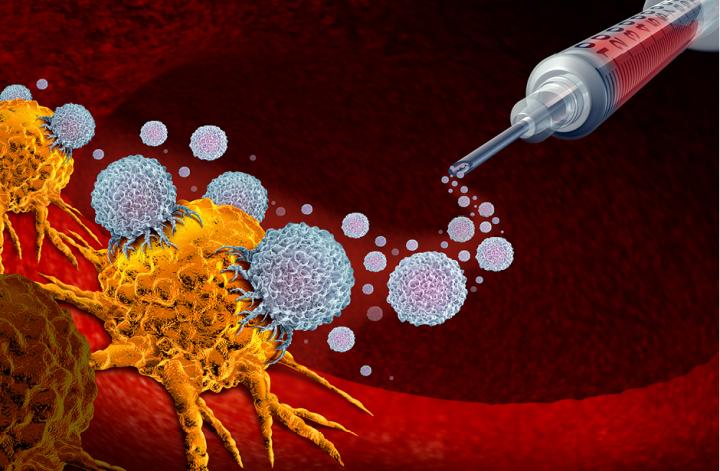What Question Were You Investigating with this Study?
Liquid biopsies, such as blood draws, can allow for the noninvasive diagnosis and monitoring of disease. The number of diagnostics based on liquid biopsies has grown in recent years, but the sensitivity of these tests (their ability to detect signs of disease) remain inadequate for many applications.
Part of the challenge is that there are low levels of cfDNA circulating in the blood stream, which makes detection difficult.
We asked: can we improve liquid biopsies for cancer by reducing the clearance of cfDNA in the body?
What Methods or Approach Did You Use?
We took inspiration from the use of injectable contrast agents like iodine and gadolinium to improve the sensitivity diagnostic imaging scans like CTs and MRIs. We thought that perhaps we could develop agents for a similar goal in liquid biopsy diagnostics.
We hypothesized that an agent that could reduce cfDNA clearance in the body would increase the levels of cfDNA in circulation and increase the amount recovered in a blood draw.
The two natural mechanisms for clearing cfDNA are update by liver-resident macrophages and degradation by circulating nucleases.
We sought to develop priming agents given one to two hours before a blood draw that act on these mechanisms and enhance cfDNA recovery.
We focused on a two-pronged approach that included:
- Nanoparticles to reduce the activity of the cells responsible for cfDNA clearance
- DNA-binding monoclonal antibodies that directly bind and protect cfDNA in blood
What Were the Results?
For the nanoparticle strategy, we identified an agent that inhibited cfDNA uptake and increased the recovery of cfDNA in blood draws from healthy mice.
For the DNA-binding monoclonal antibodies, we showed that they interacted with elements of cfDNA, protected them from degradation, and kept them longer in circulation.
These priming strategies both increased the recovery of cfDNA by more than 10-fold, enabled more complete tumor molecular profiling and increased the sensitivity for the detection of small tumors from 10% to 75% in mouse models.
What are the Clinical Implications?
If the safety of this approach is confirmed with additional research, we envision that these agents could be deployed in the clinic in many cases where a patient’s blood sample does not contain sufficient levels of tumor DNA for reliable testing.
This includes critical points in cancer care, such as when a decision needs to be made regarding adjuvant treatment after surgery or definitive radiation therapy, for diagnosis of early-stage or indeterminate lesions, for early detection of recurrence after completing cancer treatment, or for detection of rare targetable mutations in patients with advanced cancer.
What’s Next?
Although we did not see signs of toxicity with either agent in our study, the side-effect profile for these new agents will need to be tested rigorously in future pre-clinical development work prior to first-in-human studies.
Paper Cited:
Martin-Alonso, C.*, Tabrizi, S.*, Xiong, K.*, Blewett, T., Sridhar, S., Crnjac, A., Patel, S., An, Z., Bekdemir, A., Shea, D., Wang, S. T., Rodriguez-Aponte, S., Naranjo, C. A., Rhoades, J., Kirkpatrick, J. D., Fleming, H. E., Amini, A. P., Golub, T. R., Love, J. C., Bhatia, S. N., … Adalsteinsson, V. A. (2024). Priming agents transiently reduce the clearance of cell-free DNA to improve liquid biopsies. Science (New York, N.Y.), 383(6680), eadf2341. https://doi.org/10.1126/science.adf2341
Shervin Tabrizi, MD, a physician-investigator at the Mass General Cancer Center and an instructor in Radiation Oncology at Harvard Medical School, is co-lead author of a new study in Science.


















